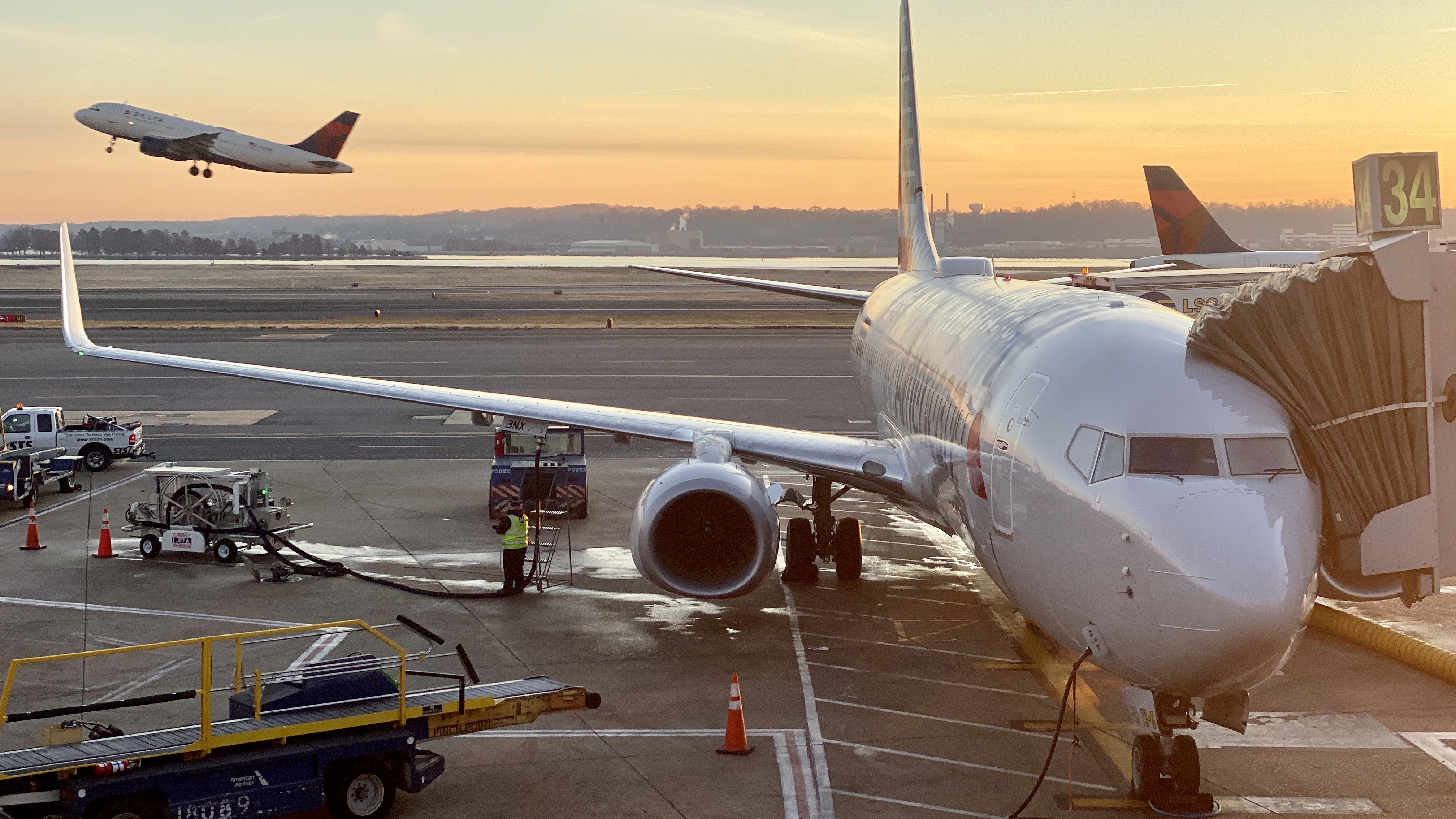
The International Civil Aviation Organization says that by 2050, emissions from aircraft could jump by between 300-700 percent. (Credit: AFP)
The International Civil Aviation Organization says that by 2050, emissions from aircraft could jump by between 300-700 percent. (Credit: AFP)
Global aviation reached a milestone of sorts on 24 July, 2019, when more than 225,000 aircraft took to the skies – the greatest number of flights ever recorded on a single day.
Flightradar24, a real-time tracking service, said it included passenger and cargo flights, chartered jets, sight-seeing planes, personal aircraft, helicopters and gliders.
While one could marvel at the mind-boggling figure and the sophistication of 21st century air traffic control, it also lays bare a rather disturbing trend – rising aviation emissions.
Aircraft contrails crisscrossing the blue sky are a sight one pays scant attention to, but there's a growing awareness of the impact these have on the environment.
From the moment a pilot pushes the throttle for take-off, until it comes to a complete stop, a jetliner, or for that matter, a small turboprop emits significant quantities of heat, particulates and gases.
Commercial aviation currently produces about two percent of human-made CO2 emissions and about 12 percent of all transportation emissions. That is set to rise amid a boom in air travel in developing nations.
The International Civil Aviation Organization (ICAO) forecasts that by 2050, emissions from aircraft could jump by between 300 and 700 percent.
Faced with calls to address an expanding carbon footprint, aerospace majors have started considering a future in which hybrid-electric and all-electric engines would power next-generation aircraft.
There is regulatory pressure as well. The European Aviation Safety Agency plans to label aeroplanes based on their emissions. By 2040, Norway and Sweden want all short-haul flights to be electrically propelled.
03:05
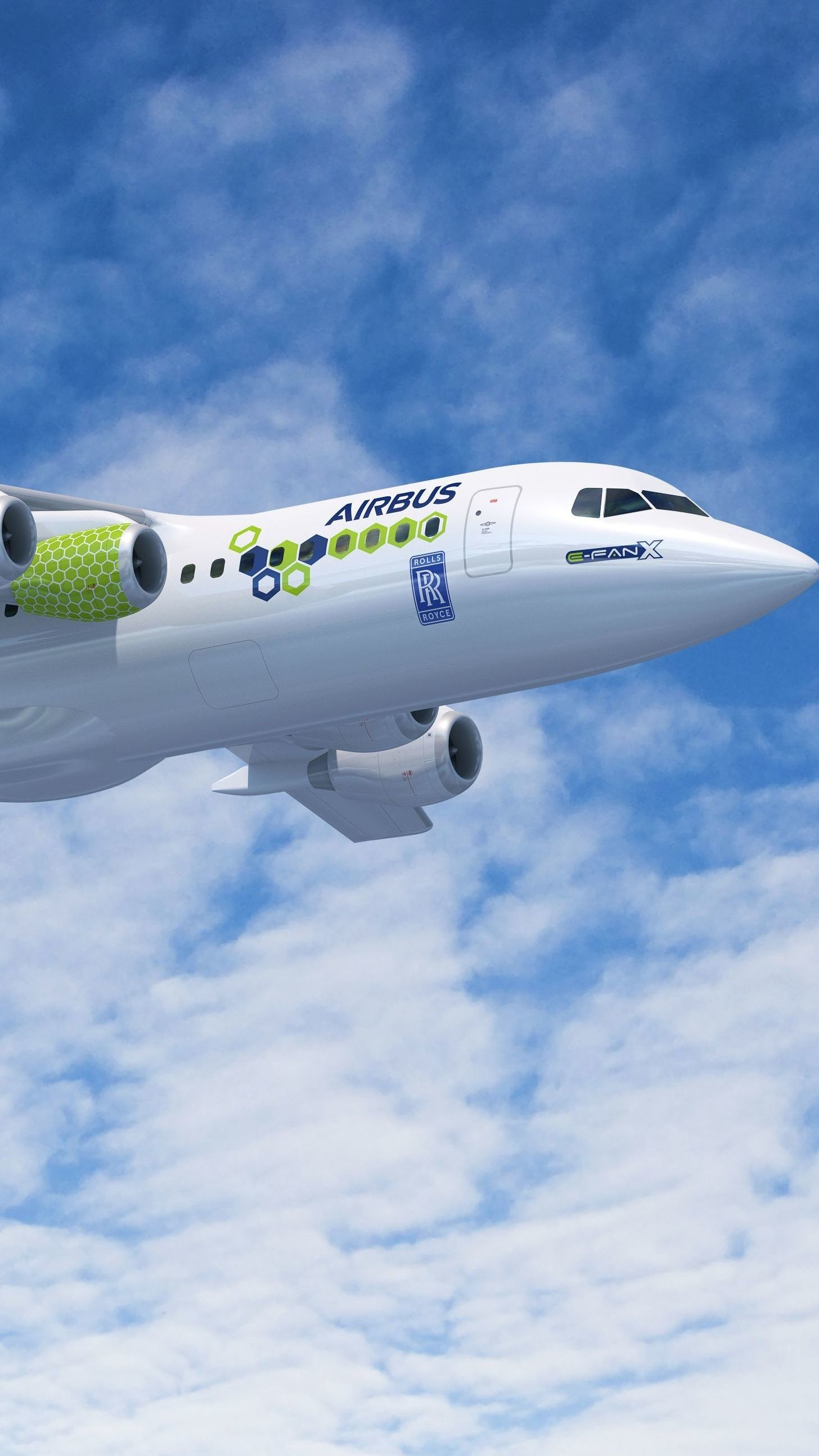
The EU's Flightpath 2050 Vision for Aviation seeks a cut of 75 percent in CO2 emissions, 90 percent in NOx emissions and a 65 percent reduction in noise levels.
The challenge of hybrid-electric propulsion
Unlike conventional jet-fueled engines, hybrid-electric propulsion comprises a conventional combustion engine and a battery.
An aircraft propelled by hybrid engines could use electric power during take-off and landing – the most energy-consuming phase of flight – and switch to kerosene once it reaches cruising altitude.
However, the difficulties in developing a fully capable hybrid engine are considerable.
Naveed Hussain, vice president and general manager of Boeing research & technology, explains: "For electric or hybrid-electric technology, there are challenges to consider.
"These include: energy storage with the right capacity and density, weight and power capability of electrical components; increased voltage for distribution infrastructure at airports; and, finally, regulatory certification procedures."
One major issue is the weight of batteries and their energy density – the amount of energy stored in the system.
Compared with the most advanced lithium-ion batteries, jet fuel has more capacity to store energy. Even if battery technology improves drastically, the industry reckons, it would only be able to power light aircraft on short routes.
GE Aviation tells CGTN Europe: "To fully realize the promise of hybrid electric commercial aircraft, the propulsion system will have to offer a thrust-to-weight ratio that is competitive with today's technology.
"Part of meeting that test is creating high-voltage systems for aircraft applications. High voltage offers greater power density and reduces weight, but creates new problems in terms of safe and efficient power management and distribution."
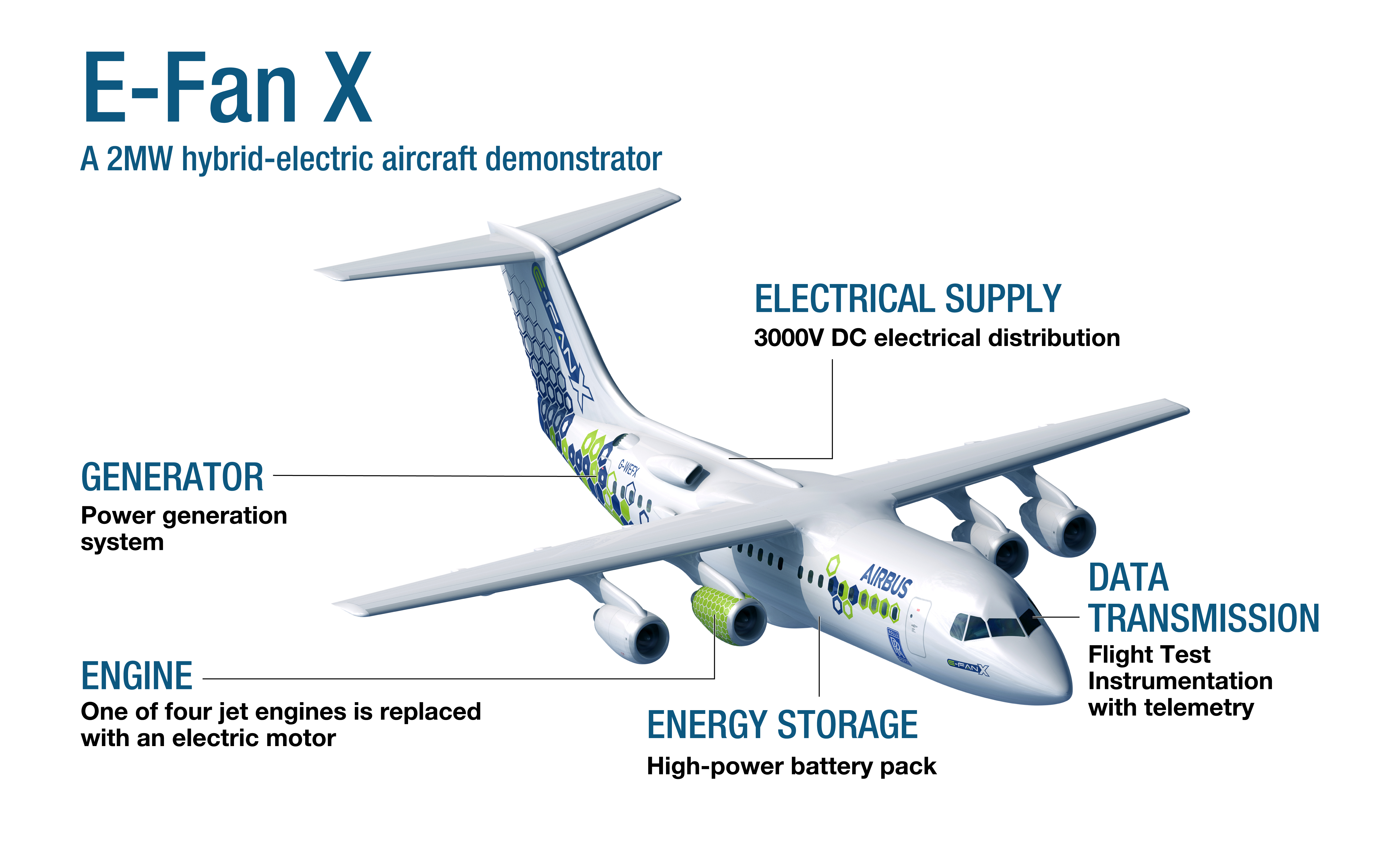
Airbus in collaboration with Rolls-Royce is working on the E-Fan X program. (Credit: Airbus)
Airbus in collaboration with Rolls-Royce is working on the E-Fan X program. (Credit: Airbus)
Notwithstanding the myriad complexities of designing a hybrid-electric system, the aviation sector has made significant strides in that direction.
Airbus in collaboration with Rolls-Royce and Siemens is working on the E-Fan X program.
The test aircraft, a BAE 146 RJ100 slated to fly in 2021, will have one of its four conventional turbofan engines replaced with a two-megawatt electric motor.
The flying laboratory will explore the challenges of high-power propulsion, such as thermal effects, electric thrust management, altitude and dynamic effects on electrical systems and electromagnetic compatibility issues.
Apart from E-Fan X, Rolls-Royce has partnered with APUS, a German aviation engineering company and the Brandenburg University of Technology, Cottbus in building a plane based on its M250 engine.
The project will involve an APUS i-5 aircraft that will demonstrate the practical application of hybrid-electric technology for a 4,000 kilogram plane.
The system could be used across a range of platforms, including EVTOL (hybrid-electric vertical take-off and landing) vehicles, general aviation and helicopters.
Rob Watson, director of Rolls-Royce Electrical, says: "We have already ground tested the hybrid version of the M250 gas turbine. It would be used as a propulsion plant with power ranging from 500 kilowatts to one megawatt."
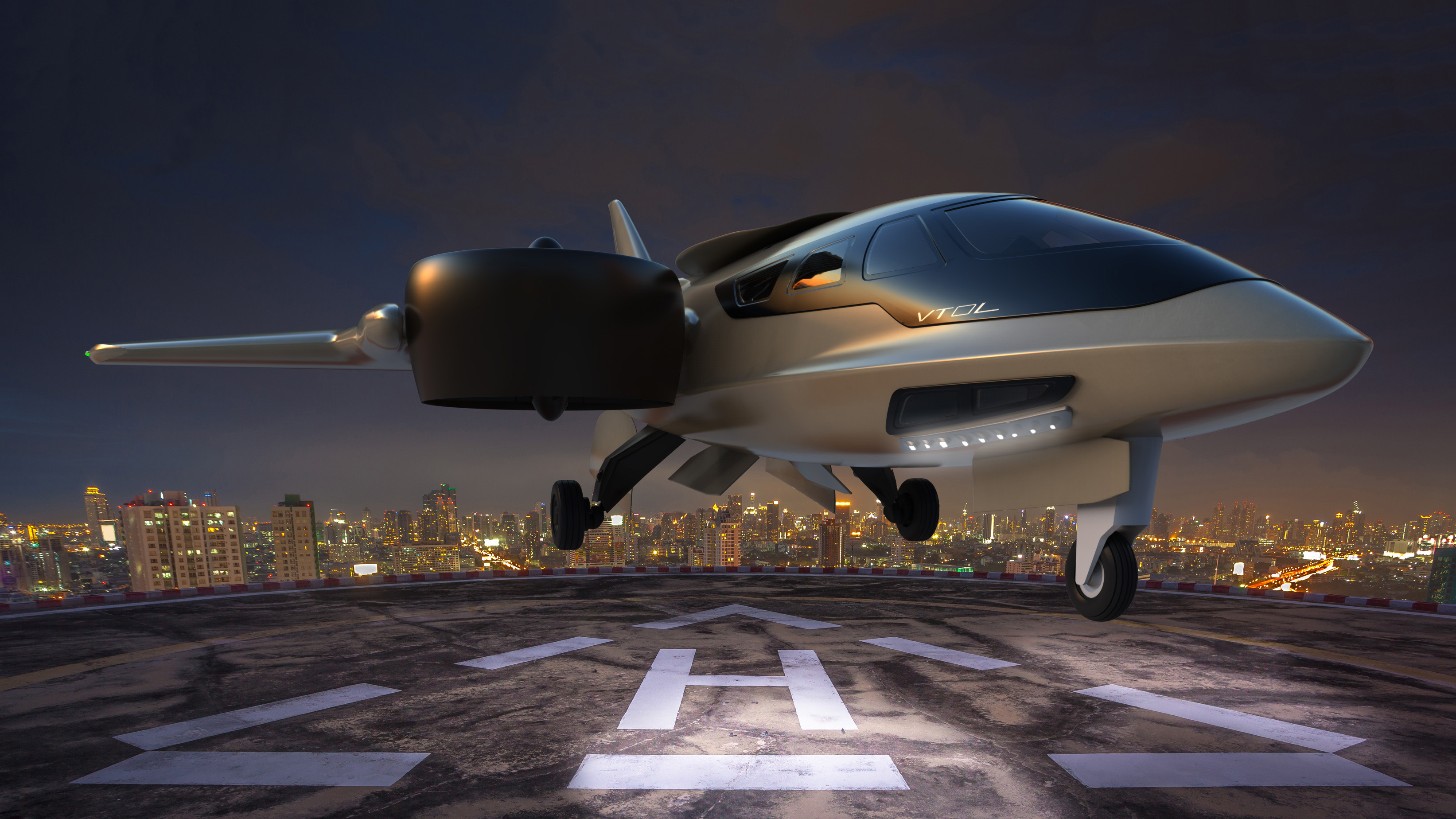
The TriFan 600 uses three ducted fans to lift off vertically. (Credit: XTI Aircraft)
The TriFan 600 uses three ducted fans to lift off vertically. (Credit: XTI Aircraft)
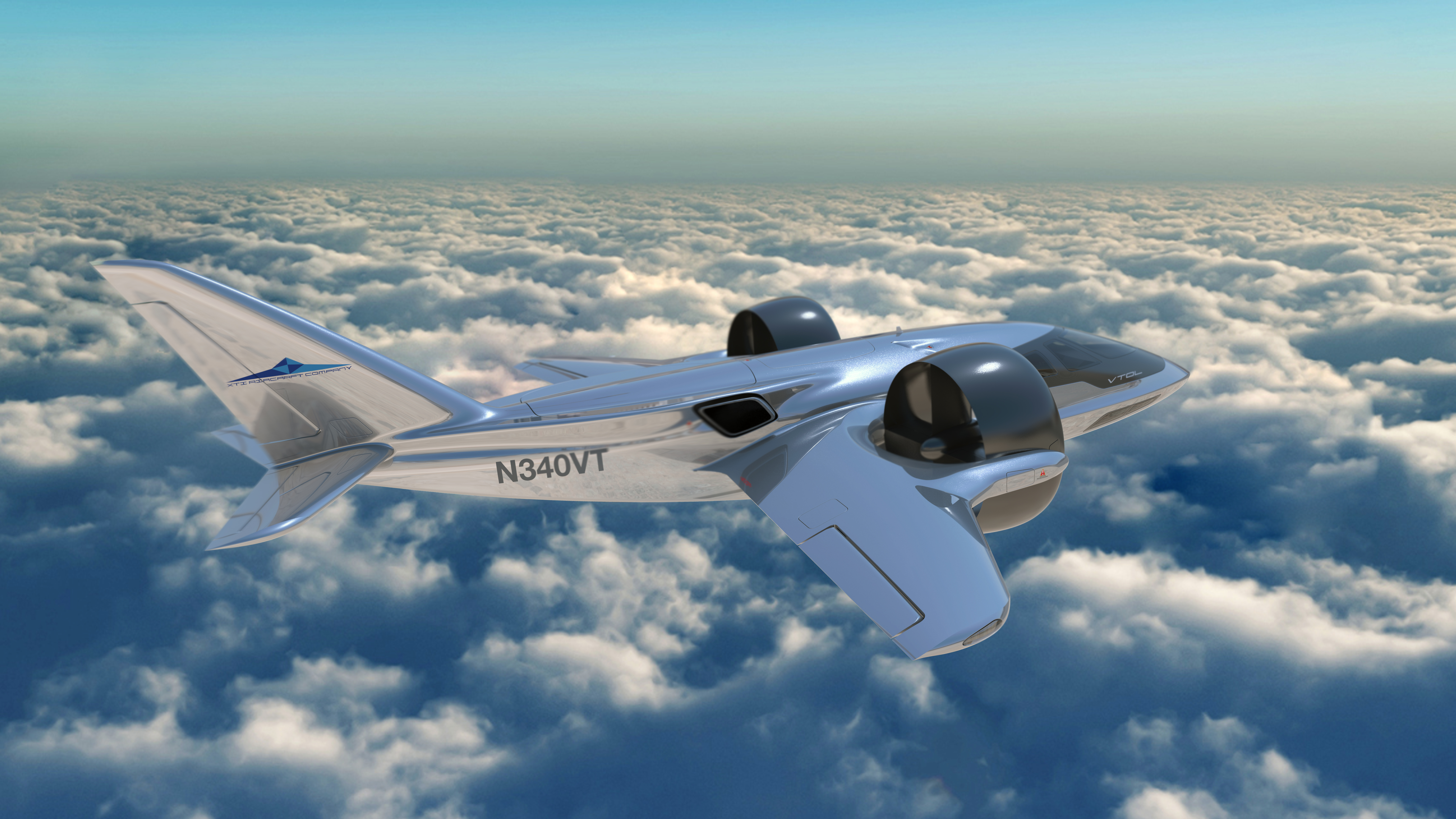
GE Catalyst engines would be used to power the TriFan 600. (Credit: XTI Aircraft)
GE Catalyst engines would be used to power the TriFan 600. (Credit: XTI Aircraft)
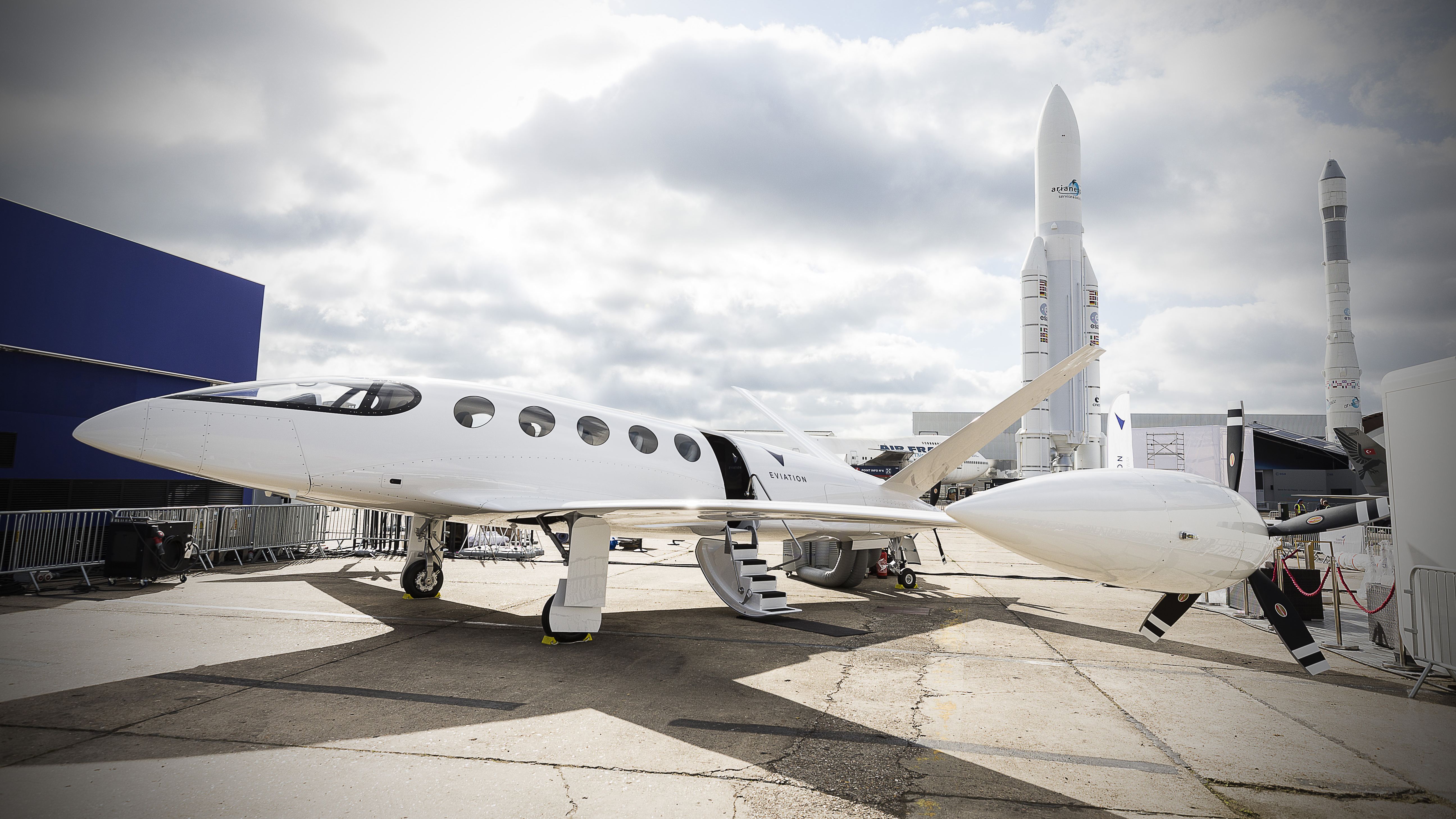
Eviation's all-electric Alice is built from 95 percent composite materials. (Credit: Eviation)
Eviation's all-electric Alice is built from 95 percent composite materials. (Credit: Eviation)
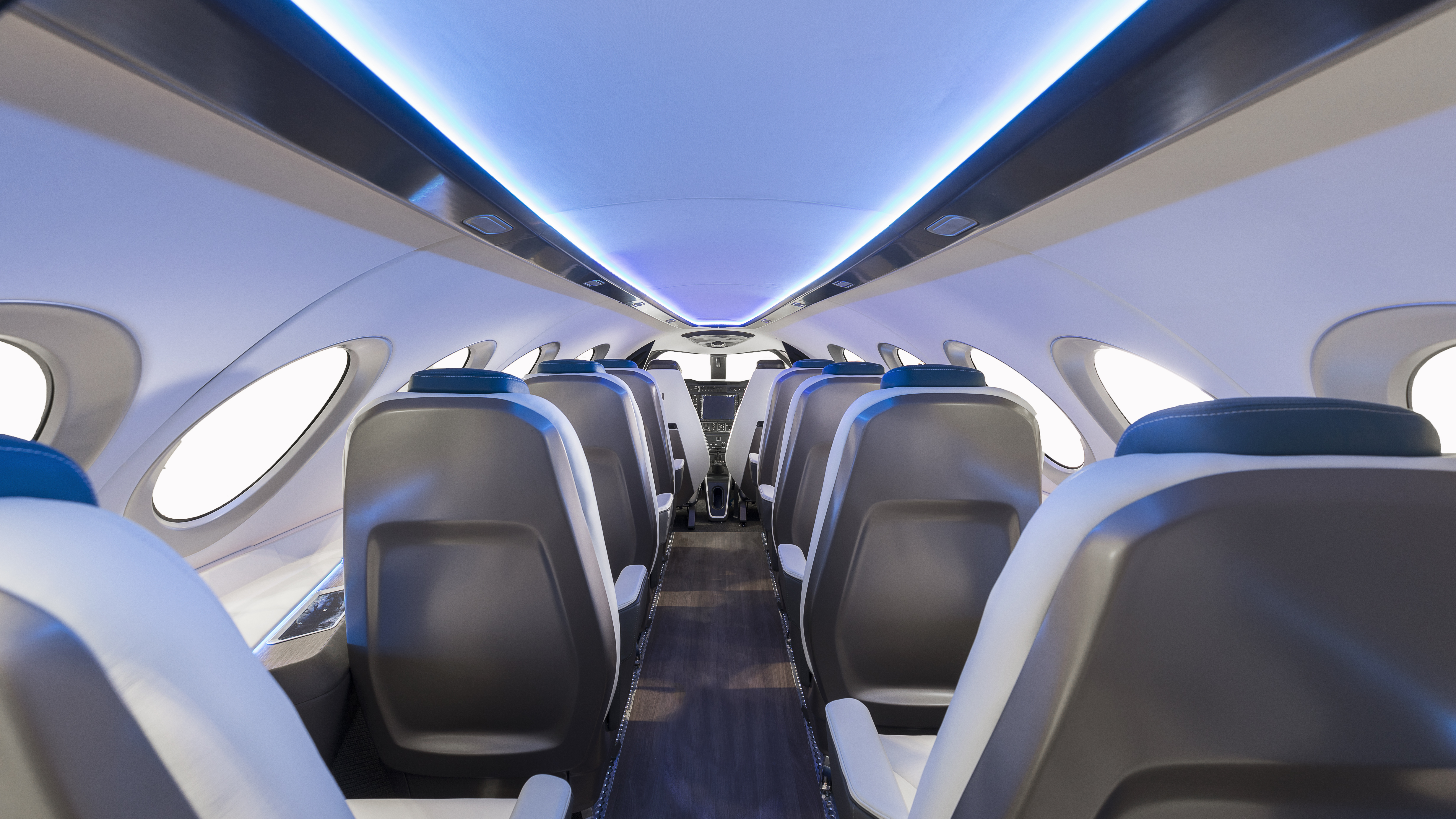
The Alice can accommodate nine passengers and fly 1,000km. (Credit: Eviation)
The Alice can accommodate nine passengers and fly 1,000km. (Credit: Eviation)
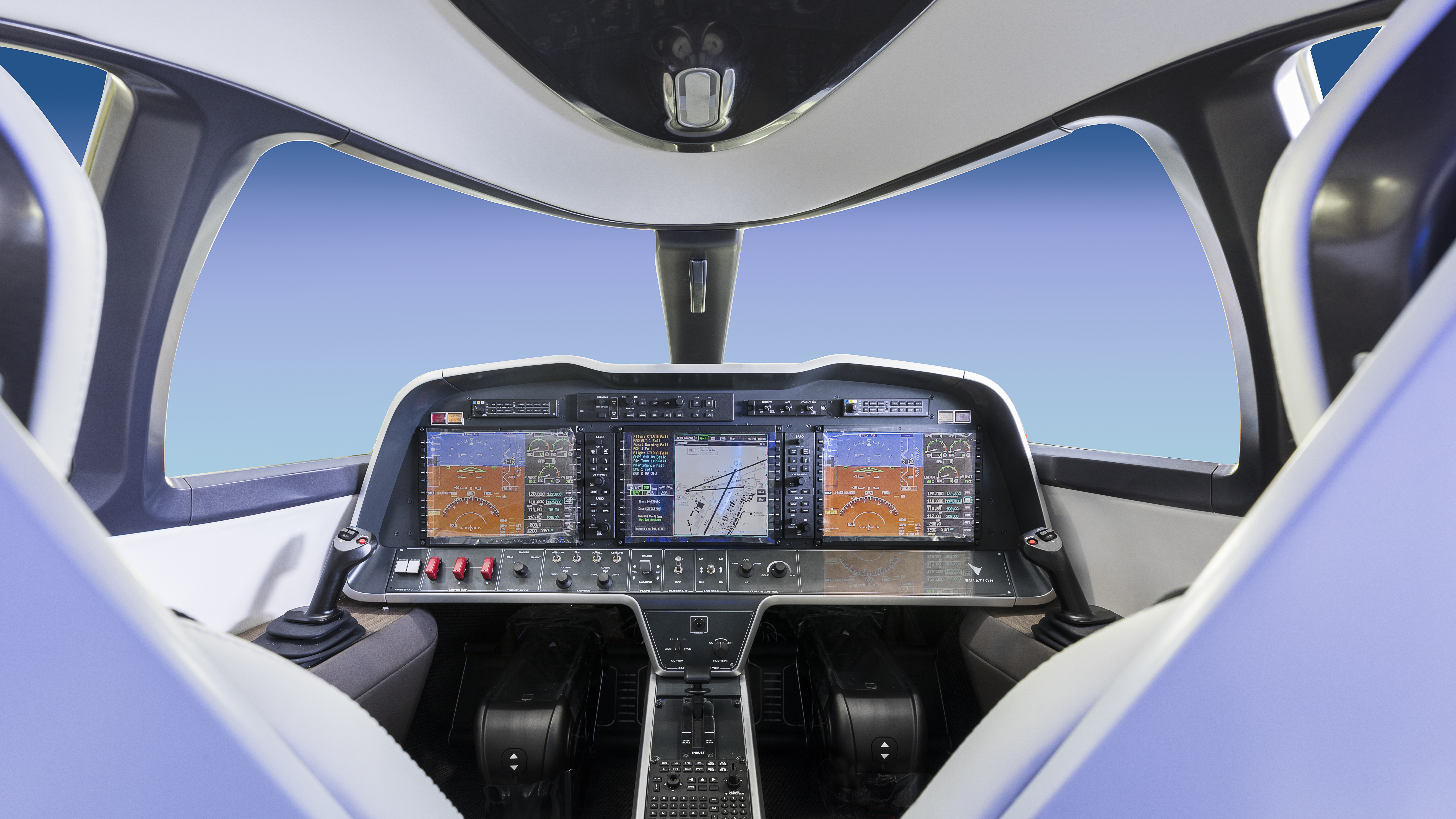
Advanced fly-by-wire controls and full multi-function displays will help fly the Alice. (Credit: Eviation)
Advanced fly-by-wire controls and full multi-function displays will help fly the Alice. (Credit: Eviation)
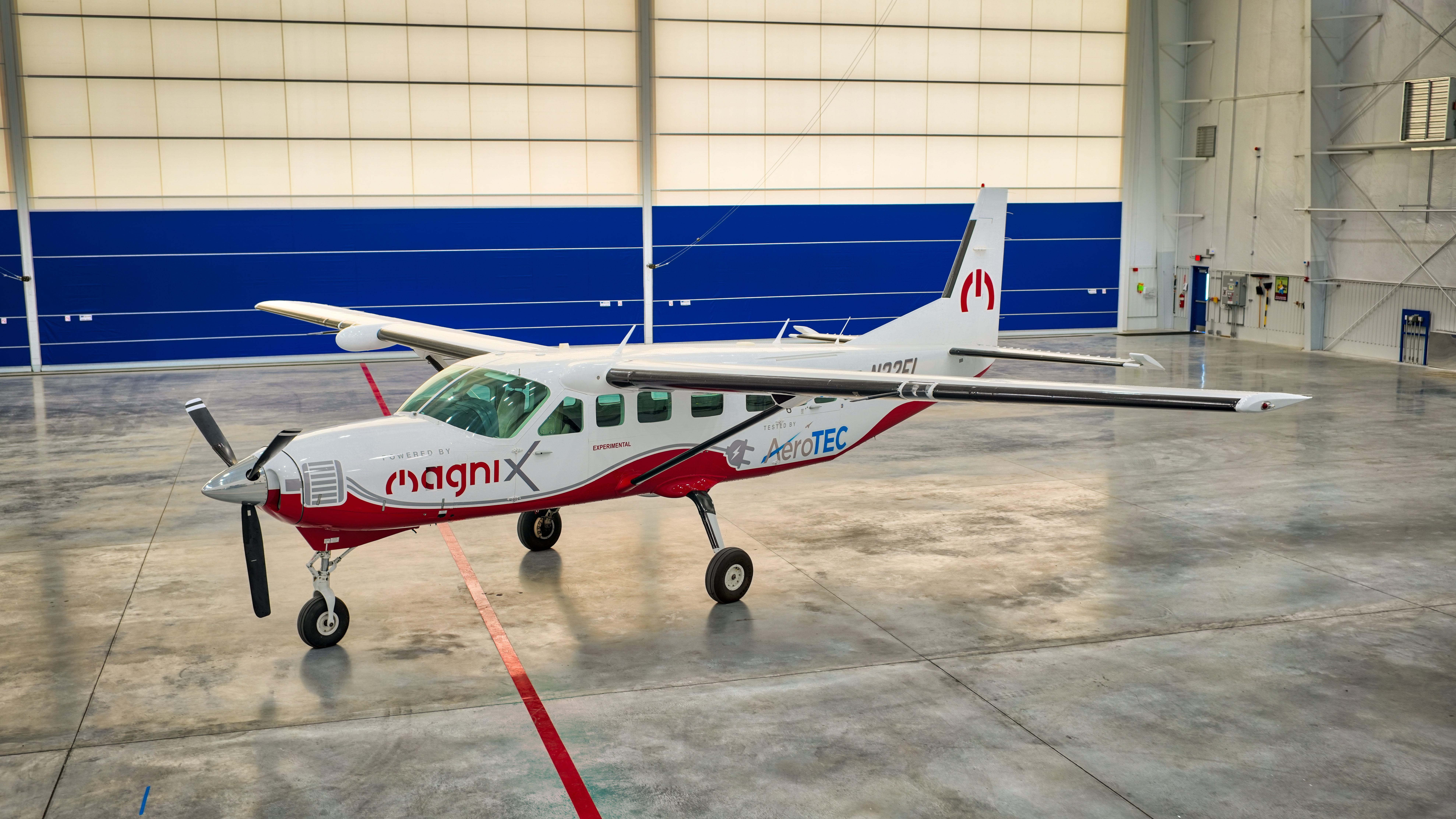
magniX's all-electric magni500 motor can be mated with planes such as the Cessna Caravan. (Credit: magniX)
magniX's all-electric magni500 motor can be mated with planes such as the Cessna Caravan. (Credit: magniX)
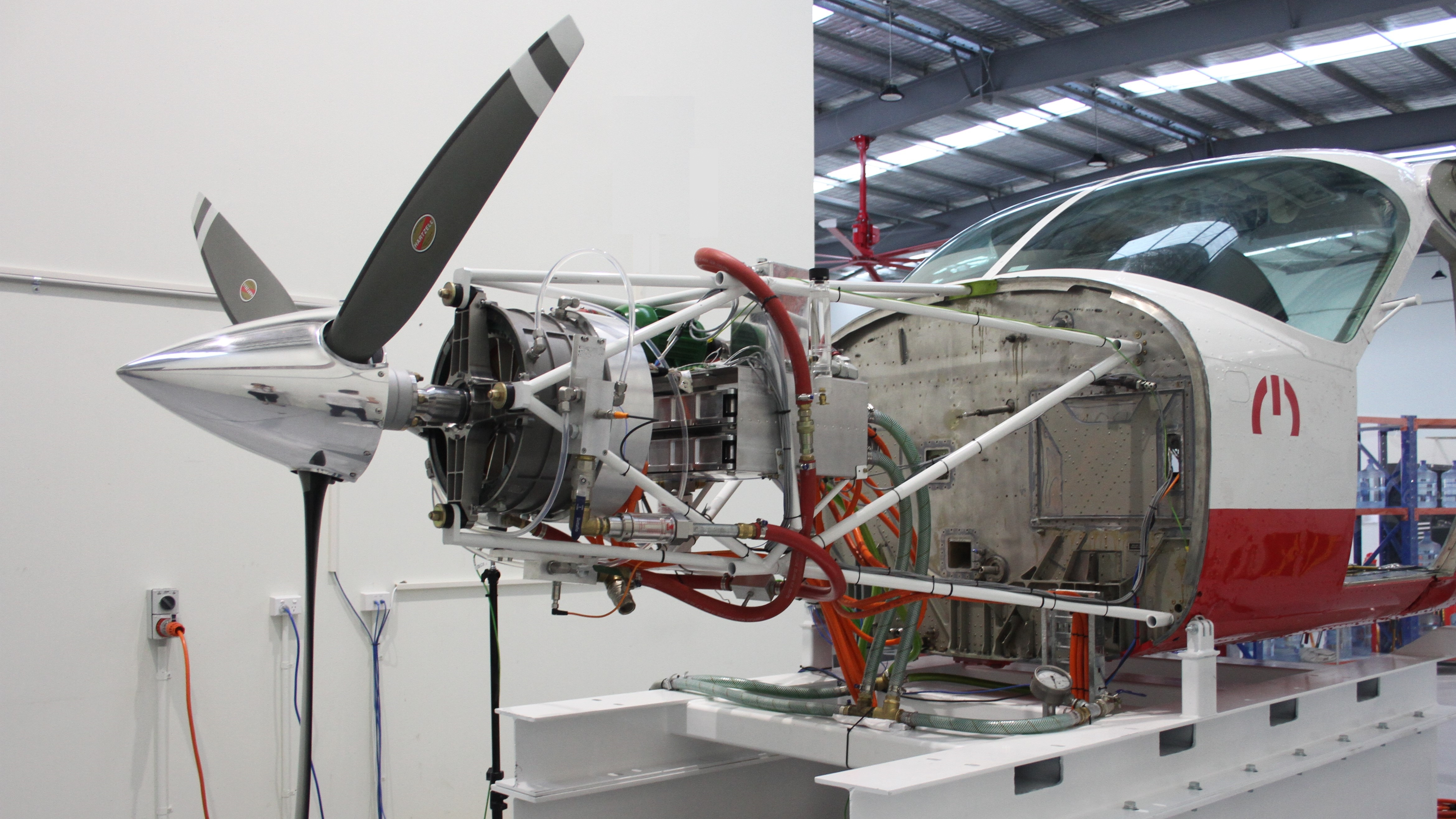
The magni500 can propel aircraft with a range of 1,600km or less. (Credit: magniX)
The magni500 can propel aircraft with a range of 1,600km or less. (Credit: magniX)
Boeing, similarly, has bet on hybrid-electric. It has partnered with NASA, start-ups and academics to study batteries, fuel cells, power inverters and other electrical subsystems.
On 23 July 2019, GE Aviation signed a deal with XTI Aircraft Company to employ its Catalyst engine as the core of a planned hybrid business aircraft, the TriFan 600.
With a maximum cruise altitude of almost 30,000 feet, speeds in excess of 555 kilometers per hour and a range of 1,900 kilometers, the plane will use three ducted fans to take off vertically and fly like a fixed-wing once attaining cruise speed.
The TriFan 600 would only be able to accommodate five passengers and a pilot.
Taking clean propulsion a step further is magniX with its all-electric motors. The US company based in Redmond, Washington, has developed its 375-horsepower magni250, which will propel the Eviation Alice, a nine-seater fly-by-wire electric plane.
Built from 95 percent composite materials, Alice will be powered by three propellers. It would be capable of cruising at 10,000 feet, fly 1,000 kilometers and achieve speeds of 445 kilometers per hour.
Next in line is the magni500, a 750-horsepower motor for aircraft covering distances of 1,600 kilometers or less.
magniX CEO Roei Ganzarksi cites the many benefits of electric flight.
"With operating costs 60 to 80 percent lower per flight hour and zero emissions, electric propulsion enables the connectivity of communities like never before, supporting the low-cost, clean movement of people and goods."
While the prospects for emission-free air travel are certainly bright, it will be some time before long-haul flights, which produce the bulk of global aviation emissions, are powered by hybrid engines.
02:19
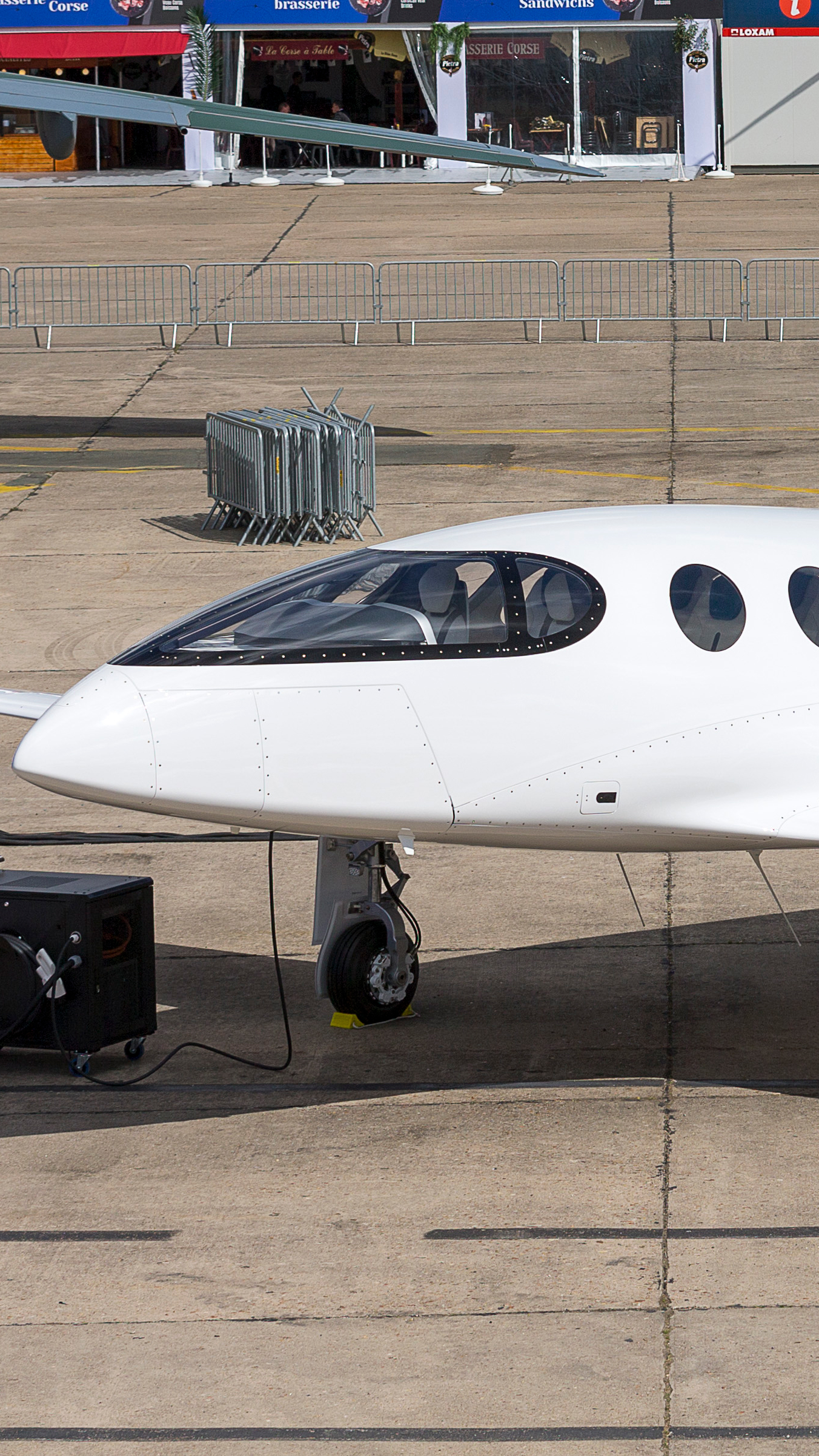
Scott Thompson, leader of PwC's aerospace and defense practice, says: "Electric propulsion is already feasible for short, light-payload aircraft, air taxis and drones."
Given the pace of research and investments in light electric flight, that is a more realistic scenario.
Electric vertical take-off and landing vehicles for regional and intercity travel are already in the works.
In the meantime, airlines are trying to reduce emissions by adopting a multi-pronged strategy that consists of hybrid-electric technology, sustainable fuels and carbon-offset schemes.
easyJet has teamed up with Wright Electric to develop zero-emission planes that could travel 500 kilometers, which constitutes 20 percent of the British budget carrier's network.
From January 2020, British Airways will become the first UK airline to offset carbon emissions on all flights within the country. Emissions from international flights will be capped under a UN-supervised carbon-pricing scheme.
According to experts, while engineers attempt to master the intricacies of hybrid-electric power, gas turbines will remain the main source of thrust for medium and long-distance flights for the foreseeable future.
Andrew Smith, a director at Deloitte's consulting practice, concurs: "Jet fuel has around 50 times the power density of today's batteries, meaning the battery required to power a long-haul flight would far exceed the weight of the equivalent requirement of kerosene."
"That makes the possibility of a long-haul hybrid-electric flight impossible in the near term."
[Correction: This article was corrected on 09/01/2020 to remove references to Siemens.] Rolls-Royce completed the acquisition of the electric and hybrid-electric aerospace propulsion activities of Siemens (formerly known as the eAircraft business) in October 2019 and therefore took over its involvement in the E-Fan X program.]